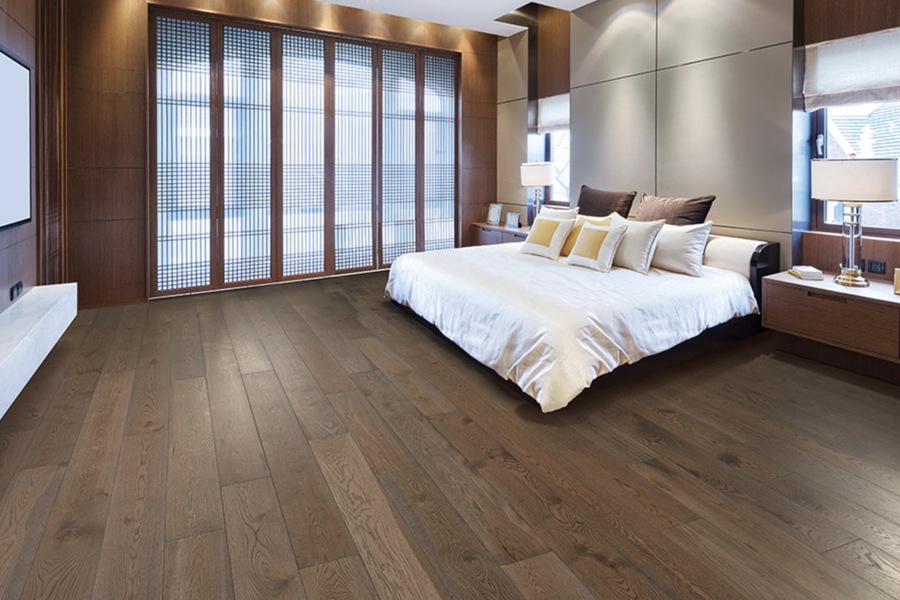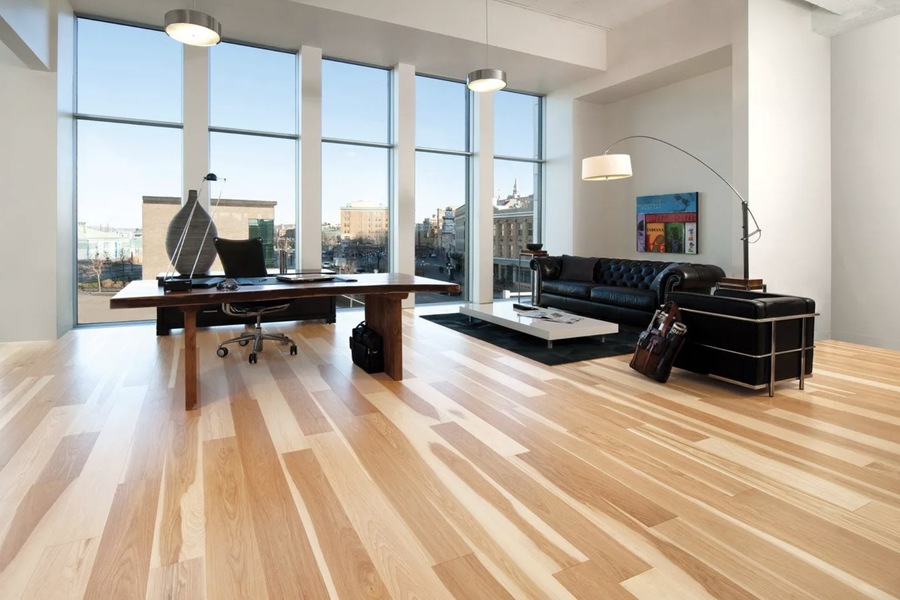Dubai, a cosmopolitan city known for its luxurious lifestyle and architectural marvels, is a melting pot of cultures. The influence of local culture on various aspects of life, including interior design and home decor, is significant. This article explores how local culture impacts bedroom flooring preferences in Dubai, considering traditional practices, climatic conditions, and contemporary trends.
Traditional Influence on Flooring Choices
Dubai’s cultural heritage has deep roots in Arabic and Islamic traditions, which influence many aspects of life, including interior design. Traditional Arabic homes often feature design elements that are not only aesthetically pleasing but also practical for the local climate.
Use of Marble and Stone
Historically, marble and stone have been popular choices for flooring in Dubai. These materials are not only durable but also help to keep homes cool in the hot climate. Marble flooring, with its smooth and elegant finish, is often used in bedrooms to create a sense of luxury and opulence, reflecting the city’s penchant for grandeur.
Carpets and Rugs
In traditional Arabic homes, carpets and rugs play a crucial role in interior decor. They are often used to cover hard flooring surfaces, providing warmth and comfort. Handwoven Persian and Turkish rugs are especially valued for their intricate designs and craftsmanship. In bedrooms, these rugs add a touch of elegance and serve as a comfortable surface for walking.
Climatic Considerations
Dubai’s climate significantly impacts flooring preferences. With temperatures often exceeding 40°C (104°F) during summer, choosing the right flooring material is essential for maintaining a comfortable indoor environment.
Cool Flooring Options
To combat the intense heat, residents often prefer flooring materials that remain cool underfoot. Marble, stone, and ceramic tiles are popular choices for this reason. These materials have high thermal mass, meaning they absorb and retain heat slowly, helping to keep bedroom interiors cool.
Moisture Resistance
Humidity can also be a concern, especially in coastal areas. Therefore, flooring materials that are resistant to moisture and easy to clean are favored. Tiles and stone are excellent in this regard, as they do not warp or get damaged by humidity and are easy to maintain.

Contemporary Trends and Global Influence
Dubai’s position as a global hub means that its residents are exposed to international design trends. This exposure influences modern flooring choices, blending traditional preferences with contemporary styles.
Luxury Vinyl and Laminate Flooring
Luxury vinyl and laminate flooring have become increasingly popular in Dubai. These materials mimic the appearance of natural wood or stone but are more affordable and easier to maintain. They offer the same aesthetic appeal while providing greater durability and resistance to the city’s climatic challenges.
Eco-Friendly Options
With growing awareness of environmental issues, eco-friendly flooring options are gaining traction. Bamboo and cork flooring, known for their sustainability, are being chosen by environmentally conscious residents. These materials not only align with global green building standards but also offer comfort and aesthetic appeal.
High-End Customization
Dubai’s luxury market demands high-end, customized flooring solutions. Homeowners often opt for bespoke designs, incorporating unique patterns and materials to reflect their personal style and status. Custom mosaic tiles, intricate parquet flooring, and imported exotic woods are examples of such bespoke options.
Social and Economic Factors
Social and economic factors also play a role in shaping flooring preferences. The diverse expatriate population, varying income levels, and the prominence of rental properties influence the choice of bedroom flooring.
Expatriate Influence
Dubai is home to a large expatriate community, which brings diverse cultural influences into the city’s interior design landscape. Expatriates often introduce flooring preferences from their home countries, leading to a mix of styles and materials. For instance, Western expatriates might prefer hardwood or laminate flooring, while those from South Asia might lean towards more traditional materials like stone and tiles.
Economic Considerations
Economic factors, such as income levels and property ownership, affect flooring choices. High-income residents and homeowners are more likely to invest in premium flooring materials, such as marble, hardwood, or custom designs. In contrast, rental properties and lower-income households might opt for cost-effective and easy-to-maintain options like laminate or ceramic tiles.
Cultural Events and Festivals
Cultural events and festivals also influence interior design choices, including flooring. During festivals like Ramadan and Eid, homes are often redecorated to reflect the festive spirit. This might involve adding new carpets, rugs, or even temporarily changing flooring materials to create a more celebratory ambiance.
Decorative Carpets for Festivals
During significant cultural events, residents might lay down special decorative carpets or rugs to enhance the festive atmosphere. These additions are often vibrant and intricately designed, reflecting the cultural heritage and adding a touch of festivity to the home’s decor.
Seasonal Changes
Although Dubai’s weather remains relatively consistent, the approach to interior decoration can change with the seasons. For instance, lighter and cooler flooring materials are preferred during the hotter months, while warmer textures like carpets and rugs might be introduced during the cooler winter months to add warmth and coziness to the bedroom.

The Role of Technology
Technology plays a significant role in modernizing flooring options and making them more adaptable to the local culture and climate.
Smart Flooring Solutions
Smart home technology is increasingly being integrated into flooring solutions. Heated floors, although not commonly needed due to the warm climate, can be an attractive feature for the few cooler months. Moreover, flooring with built-in sensors that monitor temperature and humidity can help maintain optimal indoor conditions, enhancing comfort and health.
Virtual Reality for Flooring Selection
Virtual reality (VR) is becoming a valuable tool for homeowners and designers in Dubai. It allows users to visualize different flooring options in their bedrooms before making a decision. This technology helps in choosing the right material and design that aligns with cultural preferences and practical needs.
Sustainability and Cultural Preservation
Sustainability is becoming a significant consideration in Dubai, reflecting a global shift towards more environmentally conscious living. This trend is influencing flooring choices, with a growing preference for sustainable materials that also respect cultural heritage.
Reclaimed and Recycled Materials
The use of reclaimed and recycled materials in flooring is gaining popularity. These materials not only reduce environmental impact but also add a unique character to the home. For instance, reclaimed wood can be used to create a rustic, traditional look that resonates with Dubai’s cultural history.
Sustainable Stone and Tile Options
Natural stone and tiles sourced sustainably are preferred for their durability and minimal environmental impact. These materials are also culturally relevant, as they have been traditionally used in the region. Sustainable sourcing ensures that the environmental footprint is minimized while maintaining cultural authenticity.
Conclusion
The impact of local culture on bedroom flooring preferences in Dubai is multifaceted, influenced by traditional practices, climatic conditions, contemporary trends, and social factors. From the use of cool, durable materials like marble and stone to the integration of modern, eco-friendly options, flooring choices in Dubai reflect a blend of cultural heritage and modern innovation. As the city continues to evolve, these preferences will likely adapt, balancing the demands of a cosmopolitan population with the need to preserve cultural identity. For more detailed information on sustainable building practices and materials, visit the Dubai Municipality website.

I am a Junior Web Developer for Oswald Technologies. I am an accomplished coder and programmer, and I enjoy using my skills to contribute to the exciting technological advances that happen every day at Oswald Tech.
